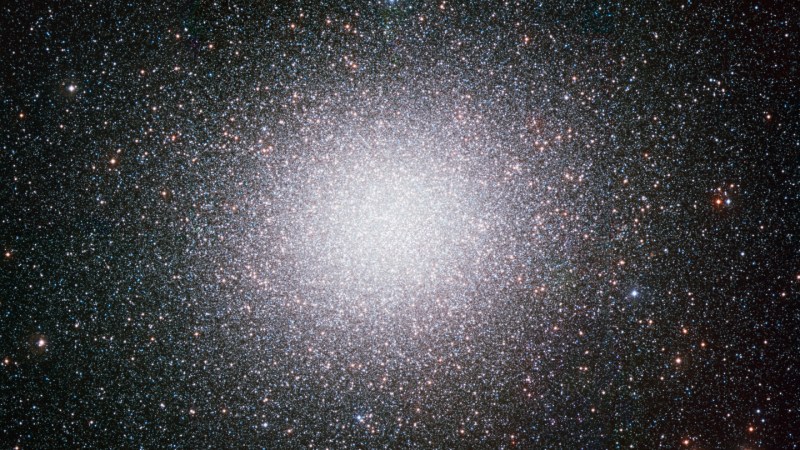
Contrary to a previous report, there is no evidence for an intermediate-mass black hole in Omega Centauri, the Milky Way’s most massive and luminous globular star cluster, a new study finds. Instead, a hive of much smaller black holes dipping in and out of the tightly packed star cluster could explain the motion and dispersion of many of its ancient stars.
“What we found in our analysis is that the data favors an extended component [of stellar-mass black holes] compared to an intermediate-mass black hole,” says Andrés Bañares-Hernández, an astronomer at the Instituto de Astrofísica de Canarias in La Laguna, Spain. About 10,000 to 20,000 stellar-mass black holes — adding up to between 200,000 and 300,000 times the mass of the sun — that are spread around the center of the star cluster could explain the observations, he says.
The study doesn’t completely rule out an intermediate-mass black hole, but if one is there, it’s much smaller than previously suggested. No black holes larger than 6,000 times the mass of the Sun exist in the star cluster, his team concludes in work submitted Aug. 1 to arXiv.org.
In contrast, the other research team said that seven stars near the center of this cluster are moving fast enough to orbit a black hole with a mass between 8,200 and 50,000 solar masses.SN: 7/10/24). Astronomers have long sought these intermediate-mass black holes because, if the elusive objects really do exist, they could help explain the evolution of black holes.
In the new work, Bañares-Hernández and his colleagues studied the motions of not only ordinary stars in Omega Centauri, but also five of its millisecond pulsars. Rotating at more than a hundred times per second, a millisecond pulsar fires a radio pulse at us every time the star turns (SN: 22.7.22). If the pulsar is moving towards Earth, each pulse takes less time to reach us. Therefore, the precise timing of these pulses reveals the exact speed and acceleration of the pulsar toward or away from Earth, which helped astronomers determine how the mass is distributed throughout the star cluster.
“It’s probably one of the best methods to use because millisecond pulsars are very stable and they give you a very clear signal of what’s going on,” says Simon Portegies Zwart, an astronomer at the Leiden Observatory in the Netherlands. which was not. part of each research team.
The astronomer who led that study declined to comment on the new work until it was accepted for publication, but he stands by his original conclusion. “We think the best explanation for these fast-moving stars being so close to the center of Omega Centauri is that they are bound by an intermediate-mass black hole,” says Maximilian Häberle of the Max Planck Institute for Astronomy at Heidelberg. Germany.
Astronomers unaffiliated with either research team are divided in their verdict. “I don’t think there’s any strong evidence for an intermediate-mass black hole,” says Gerry Gilmore, an astronomer at the University of Cambridge. “In the new study, they did a much better job than anyone before, including the types of [dim] The stellar populations that we really know about are very, very common” in the centers of globular clusters: neutron stars and stellar-mass black holes.
On the other hand, astronomer Daryl Haggard of McGill University in Montreal calls the evidence for a medium-mass black hole “pretty compelling. It’s very, very, very difficult to come up with a model that gets those fast-moving stars into the center of Omega Centauri and that they’re not being driven by an intermediate-mass black hole.”
How to resolve the dispute? “Give me an orbit,” says Portegies Zwart, who says he’s “a little skeptical” of the existence of the intermediate-mass black hole. A star orbiting something invisible weighing thousands of solar masses would be strong evidence, he says. So would a glow from gas falling into a black hole, Haggard says.
#nearest #middleaged #black #hole #crowd #lightweights
Image Source : www.sciencenews.org